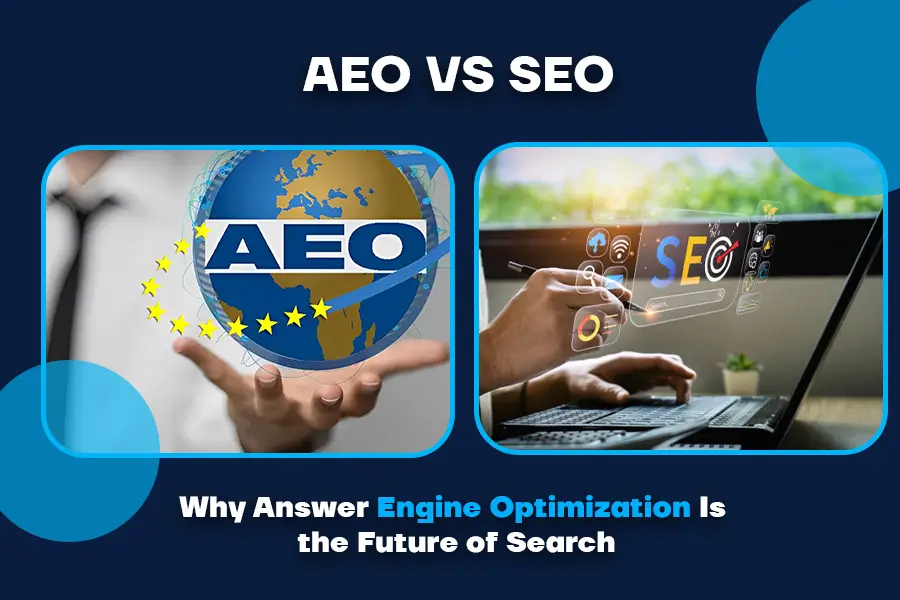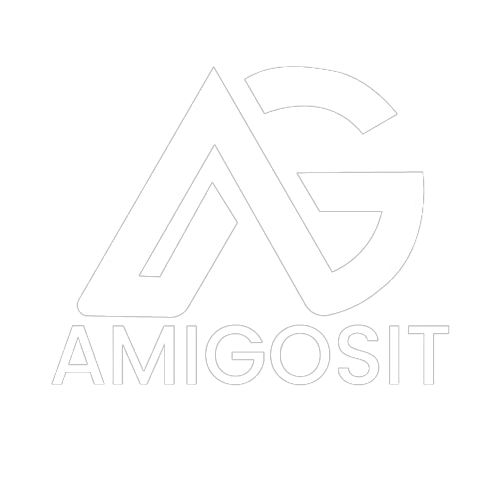
AEO vs SEO How Search Trends Are Shifting

Search engine optimization (SEO) has long been the gold standard for online visibility. But as search behavior evolves, there’s a powerful shift happening one that’s quietly reshaping how we approach content; Answer Engine Optimization (AEO).
In this blog, we’ll break down AEO vs SEO, explore why AEO is emerging as the future of search, and show you how to prepare your digital strategy for the answer-first era.
What Is SEO?
Search Engine Optimization (SEO) refers to the practice of improving your website and content to rank higher in search engine results, especially on platforms like Google, Bing, and Yahoo. It involves:
- Keyword research
- On-page optimization
- Backlink building
- Mobile and page speed optimization
- Structured data implementation
SEO’s goal is to drive traffic to your website by getting your pages to appear at the top of search engine results pages (SERPs).
What Is AEO (Answer Engine Optimization)?
Answer Engine Optimization is the process of structuring your content to directly answer specific user questions, especially for voice search, AI assistants, and answer-based platforms like:
- Google Assistant
- Apple Siri
- Amazon Alexa
- ChatGPT
- Bing Copilot
- Perplexity
- Gemini (by Google)
Unlike traditional SEO, AEO isn’t about ranking a page—it’s about providing the most accurate, structured, and relevant answer to a query, often with zero-click results (where users get answers without visiting a website).
AEO vs SEO – Key Differences
Feature | SEO | AEO |
Goal | Rank web pages on SERPs | Deliver direct answers via AI or voice supporters |
Attention | Keywords, backlinks, content length | Natural language queries, context, structured data |
User Intent | Navigational, informational, transactional | Primarily informational or question-based |
Output Format | Lean of links (10 blue links) | Shortest answer (snippet, voice, Chabot) |
Search Interfaces | Web browsers | Voice search, AI tools, smart devices |
Engagement | Page clicks | Information delivery without site visit |
Why AEO Is the Future of Search
1. Increase of Voice Search and AI Assistants
- Over 50% of all searches are nowadays voice-based.
- Devices like Alexa, Google Nest, and smartphones trust on direct answers.
- AI-powered platforms like ChatGPT and Perplexity.ai skip traditional search engines and pull from structured, reliable content.
If your site isn’t AEO-optimized, it likely won’t be picked by voice or AI.
2. Zero-Click Searches Are Growing
According to Spark Toro, 65% of Google searches in 2024 ended without a click users got their answer directly from a featured snippet, knowledge panel, or AI overview.
AEO prepares your content to be the source of these instant answers.
3. Google’s AI-First Algorithms
Google’s shift toward Search Generative Experience (SGE) and MUM (Multitask Unified Model) means the algorithm now:
- Understands context better
- Delivers answers across languages and formats
- Prefers concise, authoritative, and well-structured content
This favors AEO over long-form, keyword-stuffed SEO content.
4. AEO Improves Your SEO
Optimizing for AEO naturally improves your SEO by:
- Enhancing content clarity
- Targeting long-tail and voice queries
- Encouraging better formatting (FAQs, tables, schemas)
Think of AEO as SEO 2.0 not a replacement, but an evolution.
How to Optimize for AEO - Practical Tips
1. Use Conversational, Question-Based Content
Write for how people asked questions (specifically in voice search):
- What is AEO?
- How do I optimize for Google Assistant?
- Best tools for AI search optimization?
2. Create FAQ Sections
Search engines and AI models love FAQs. Use them to:
- Summarize key points
- Provide direct answers in short, clear sentences
or AI search optimization?”
3. Implement Structured Data (Schema Markup)
Use schema to label:
- FAQs
- How-tos
- Articles
- Reviews
This helps machines understand and present your content accurately.
4. Prioritize Clear, Direct Answers
Keep answers:
- Under 40–50 words
- Simple and jargon-free
- Fact-based and sourced (EEAT-approved)
AEO-Friendly Platforms to Watch
As well Google, make sure your content is ready for:
- ChatGPT (OpenAI)
- Perplexity
- Bing Copilot
- You.com
- Amazon Alexa
- Apple Siri
- Google Assistant
Optimizing for these channels gives your content visibility beyond traditional search.
Final Thoughts
As AI and voice search continue to change how people learn information, Answer Engine Optimization is no longer possible it’s important. While SEO still matters, relying only on rankings and backlinks won’t be enough in an answer-first world.
AEO is about prominence in a post-click scene.
By focusing on clarity, context, and credibility, you’ll position your content to lead the conversation across search, voice, and AI platforms.
With years of experience, our digital marketers smart, data-driven strategies and creative solutions, grounded in a deep understanding of shifting online trends. We focus on making your brand feel authentic and memorable in today’s fast-paced digital world.
Let's Talk
(+92) 310 7990605
info@amigositsystems.com
2nd Floor Ismail's Garments Near Town Hall 64200
Frequently Asked Questions (FAQs)
SEO, or Search Engine Optimization, is all about boosting a website’s visibility on search engines such as Google and Bing. AEO (Answer Engine Optimization), on the other hand, is the process of optimizing content to be directly used by answer engines like Google’s featured snippets, voice assistants (like Siri or Alexa), and AI tools like ChatGPT.
Answer engines are tools or platforms designed to provide direct answers to users’ questions often without sending them to a website. Examples include Google’s “People Also Ask” boxes, featured snippets, voice search results, and AI chatbots.
With the increase of voice search and AI assistants, users expect immediate, accurate answers. AEO ensures your content is formatted in a way that makes it easily accessible and understandable by these platforms.
Yes! SEO and AEO work together. SEO helps drive traffic and build domain authority, while AEO improves your chances of being quoted or featured by answer engines. Ignoring SEO would hurt your site’s visibility; ignoring AEO means you might miss out on new traffic sources.
Featured snippets are a core part of AEO. They’re often the first and sometimes the only response users see in voice searches or on mobile devices. Structuring content to win these positions increases visibility without requiring clicks.
Absolutely. You can write comprehensive, SEO-friendly blog posts and then pull key sections into FAQ blocks, tables, or short answers to serve AEO needs. Think of AEO as layered on top of SEO.
Yes, voice search usually pull their answers from content optimized for AEO. If your content answers questions naturally and clearly, it’s more likely to be used in spoken responses.
Google scans content for direct, helpful answers to common queries. It may use your AEO-optimized content in:
- Featured snippets
- People Also Ask boxes
- Google Assistant voice replies
- AI summaries (Search Generative Experience – SGE)
Both are important, but the balance is shifting. With the rise of AI and voice search, AEO is becoming essential for getting noticed beyond standard search engine rankings. Still, foundational SEO remains the backbone of discoverability and traffic.



